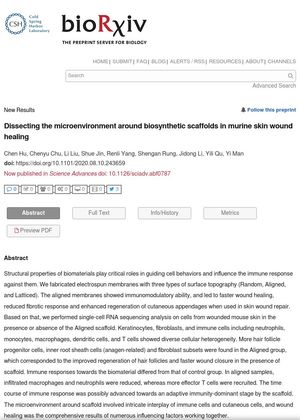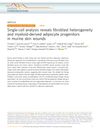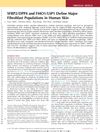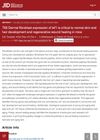Dissecting the Microenvironment Around Biosynthetic Scaffolds in Murine Skin Wound Healing
August 2020
in “
bioRxiv (Cold Spring Harbor Laboratory)
”
wound healing immune response electrospun membranes Random Aligned Latticed immunomodulatory ability fibrotic response cutaneous appendages skin wound repair Single-cell RNA sequencing hair follicle progenitor cells inner root sheath cells anagen fibroblast subsets hair follicle regeneration wound closure macrophages neutrophils effector T cells adaptive immunity microenvironment cutaneous cells

TLDR The Aligned membranes improved wound healing and hair growth with a better immune response in mice.
In 2020, a study was conducted on the impact of biomaterials with different surface topographies on wound healing and immune response. Three types of electrospun membranes were fabricated: Random, Aligned, and Latticed. The Aligned membranes demonstrated an immunomodulatory ability, leading to faster wound healing, reduced fibrotic response, and enhanced regeneration of cutaneous appendages in skin wound repair. Single-cell RNA sequencing analysis was performed on cells from wounded mouse skin with or without the Aligned scaffold. The Aligned group showed more hair follicle progenitor cells, inner root sheath cells (anagen-related), and fibroblast subsets, which corresponded to improved hair follicle regeneration and faster wound closure. The immune response towards the biomaterial differed from the control group, with reduced macrophages and neutrophils but more effector T cells in the Aligned samples. The scaffold possibly advanced the immune response towards an adaptive immunity-dominant stage. The microenvironment around the scaffold involved a complex interplay of immune cells and cutaneous cells, with wound healing being the result of numerous influencing factors working together.



